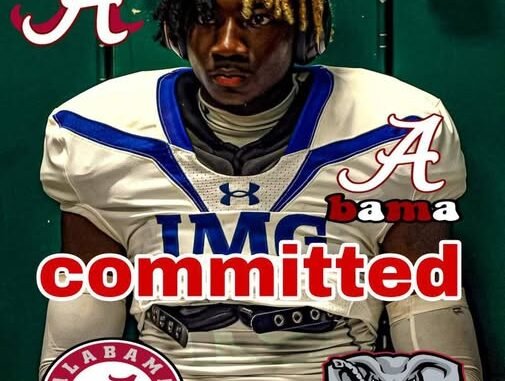
Beyond the Dollar Sign: The New Blueprint for Success in College Football Recruiting
In the ever-evolving world of college football recruiting, the rules of the game are constantly being rewritten. What was once a system driven by a coach’s charisma, a school’s tradition, and a promise of a future in the NFL has been fundamentally transformed by two seismic shifts: the rise of NIL (Name, Image, and Likeness) deals and the ubiquity of the transfer portal. While a top-tier recruit’s decision was once a clear-cut choice, it is now a complex, multi-layered negotiation that involves financial gain, coaching stability, and a profound commitment to a school’s culture. In this new era, a recruit who chooses to prioritize development over dollars is not just making a choice; they are making a statement about the future of the game.
The numbers tell a story that is both fascinating and, at times, alarming. According to a recent report from the NIL marketplace platform Opendorse, an estimated $1.7 billion was transacted in NIL deals in the past year. This staggering figure is a clear sign that money has become a central, and often decisive, factor in the recruiting process. With a few top-tier programs having access to deep-pocketed alumni and well-funded collectives, they are able to make offers that are simply impossible for other schools to match. This has created a new kind of “arms race” in college football, one where the biggest brands are able to outbid their competitors for the top talent.
But while the dollar signs may be the flashiest part of the modern recruiting landscape, they are not the only factor. A growing number of recruits, and their families, are beginning to look at the long-term picture. They are asking a new set of questions: “Will this coaching staff be here for the next four years?” “Does this program have a proven track record of developing players at my position?” and “Does the culture of this school align with my values?” These are the questions that go beyond the financial offer and that speak to a new, more holistic approach to college selection.
The Primacy of Coaching Stability
In an era of unprecedented coaching turnover, a stable coaching staff has become a major selling point for recruits. The average FBS coach’s tenure is now a mere 3.3 years, a fact that has not been lost on the nation’s top prospects. A recruit who commits to a school is now making a gamble that the coach who recruited them will still be there when they are a senior. For a player who is looking for a place to develop and to build a lasting legacy, a stable coaching staff is a crucial element of the decision-making process. This is why a school like Georgia, which has a proven head coach in Kirby Smart, is able to consistently attract top-tier talent, even when a rival may be able to offer a larger NIL deal.
The Allure of Player Development
For a player with legitimate NFL aspirations, the ultimate goal is not a six-figure NIL deal; it is a multi-million dollar contract in the NFL. And the best way to get there is through elite-level player development. A school that has a proven track record of sending players to the professional ranks is a major draw for recruits. They want to know that they will be coached by the best, that they will have access to state-of-the-art facilities, and that they will be in a system that is designed to prepare them for the rigors of the NFL. This is why a school like Alabama, which has produced more NFL Draft picks than any other program in the country, will always be in the mix for the top talent, regardless of the NIL offers that they can provide.
The Enduring Power of Tradition and Culture
Finally, and perhaps most importantly, the culture of a school is still a crucial factor in the recruiting process. A recruit wants to feel like they are a part of a family, a community, and a tradition that is larger than themselves. They want to feel a sense of belonging, a feeling that they are a part of something special. This is the intangible element of recruiting, the part that cannot be measured in dollars and cents. The tradition, the history, and the culture of a school are a powerful force that can, and often does, tip the scales in a recruit’s decision.
The modern recruiting landscape is a complex and often confusing one. But for the top-tier prospects, the blueprint for success is becoming clearer. While NIL is a major factor, it is not the only factor. For a player who is truly dedicated to the game, the promise of a stable coaching staff, elite player development, and a culture that is built on a foundation of excellence will always be more valuable than a bigger paycheck.
Leave a Reply